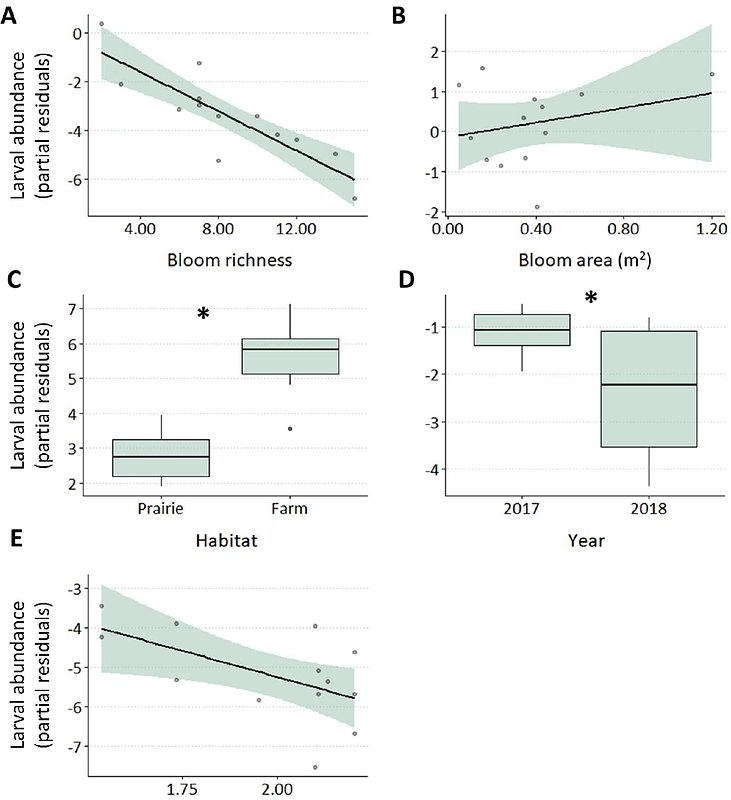Pollen DNA reveals urban cavity-nesting bees feed primarily on weeds and frequently nest in urban farms

Pollen DNA reveals urban cavity-nesting bees feed primarily on weeds and frequently nest in urban farms
Turo, K. J.; Richardson, R. T.; Frabotta, M.; Johnson, R. M.; Gardiner, M. M.
AbstractCities have been acclaimed as hotspots for bee biodiversity and potential conservation targets, leading to continued investment in urban pollinator plantings. However, newly created habitats are rarely assessed for their efficacy in supporting bee fitness or the extent to which bees use seeded wildflowers. We compared urban bee nesting in targeted pocket prairie pollinator plantings versus urban farms that were intended to support multiple ecosystem services in Cleveland, Ohio, USA. We used trap nests to evaluate nesting success of cavity nesting bees and pollen metabarcoding to determine whether bees collected pollen from seeded plantings during nest provisioning. Pollen DNA revealed most bee-collected pollen was from urban spontaneous vegetation (or weeds) in Fabaceae, especially Trifolium spp. We also found that urban farms harbored more native bee larvae than targeted pollinator plantings. Finally, when bee nests were situated in a landscape with greater greenspace connectivity, we observed more native bee larvae and greater plant diversity in bees nesting provisions. Collectively, these findings suggest that multi-service greenspaces like urban farms can provide important urban pollinator habitat, and greenspace value for bees is driven by resident weeds and greenspace configuration.